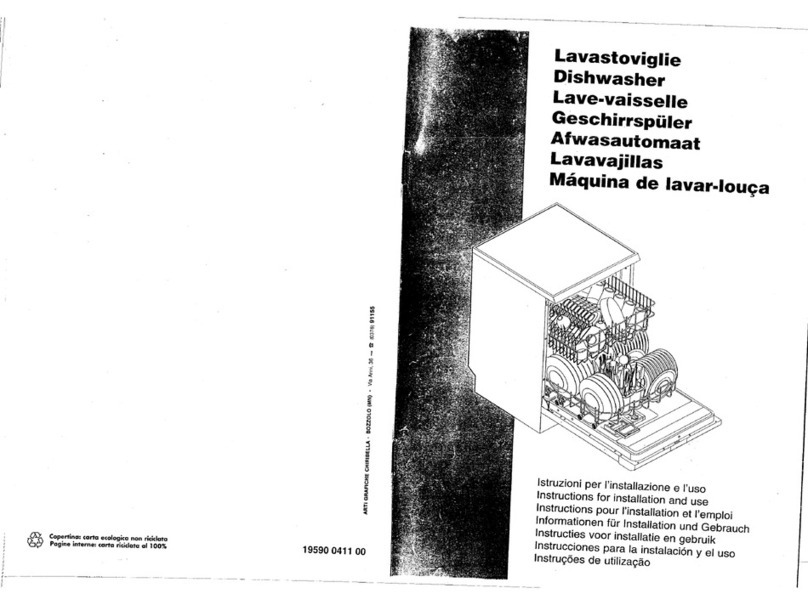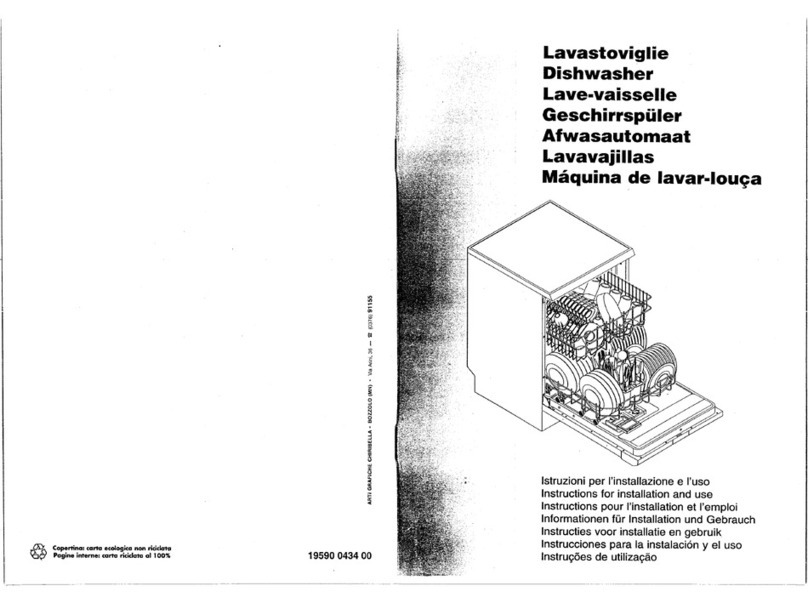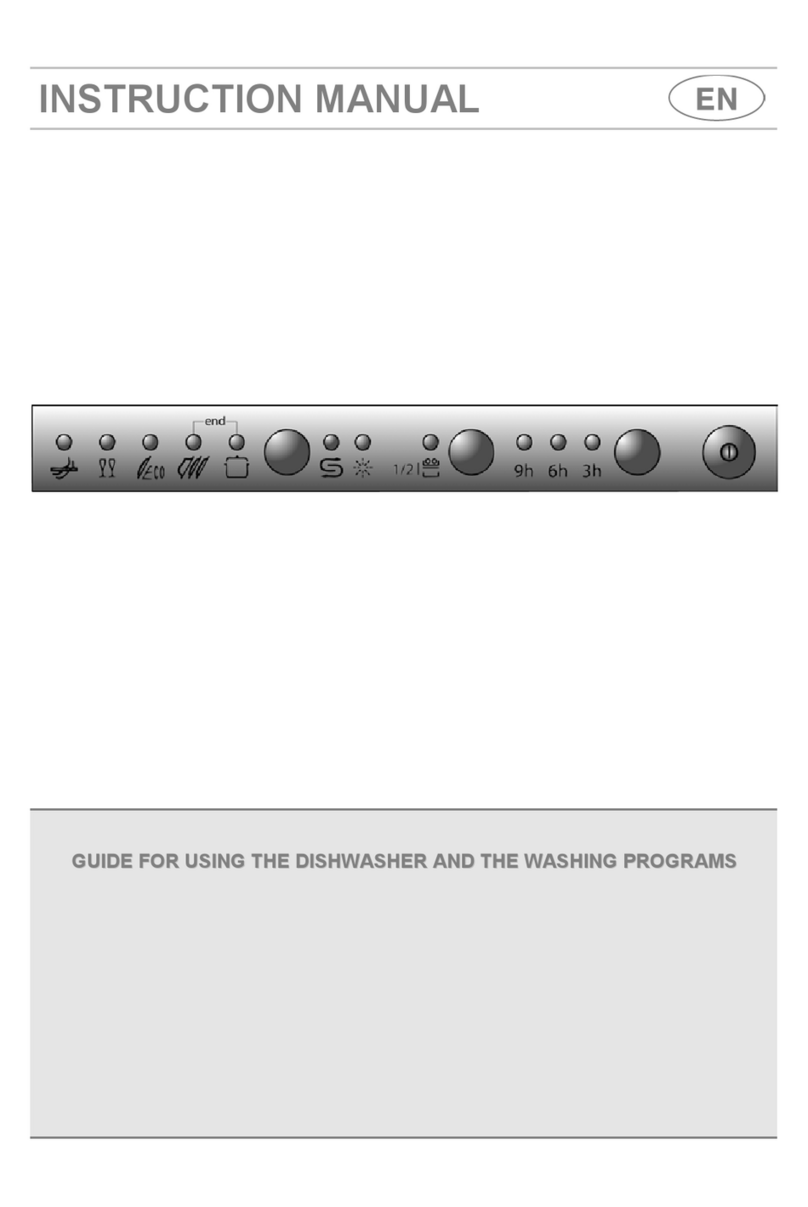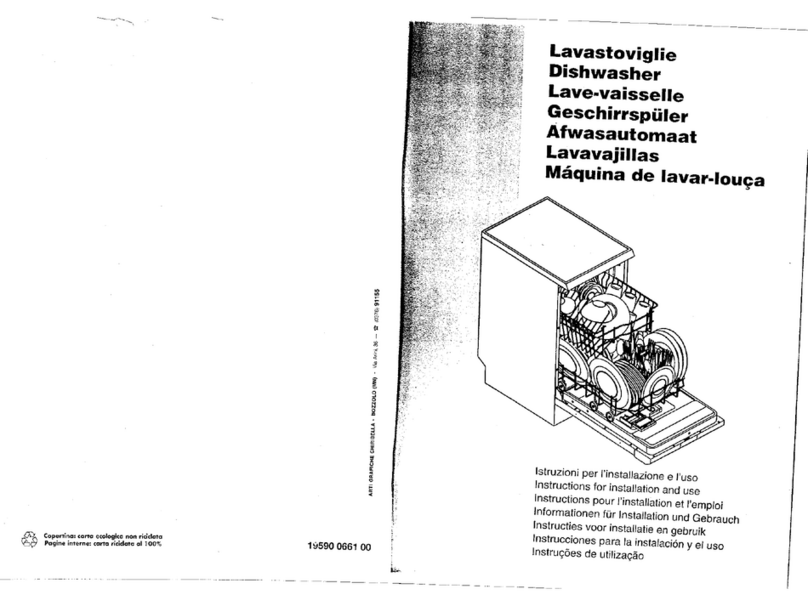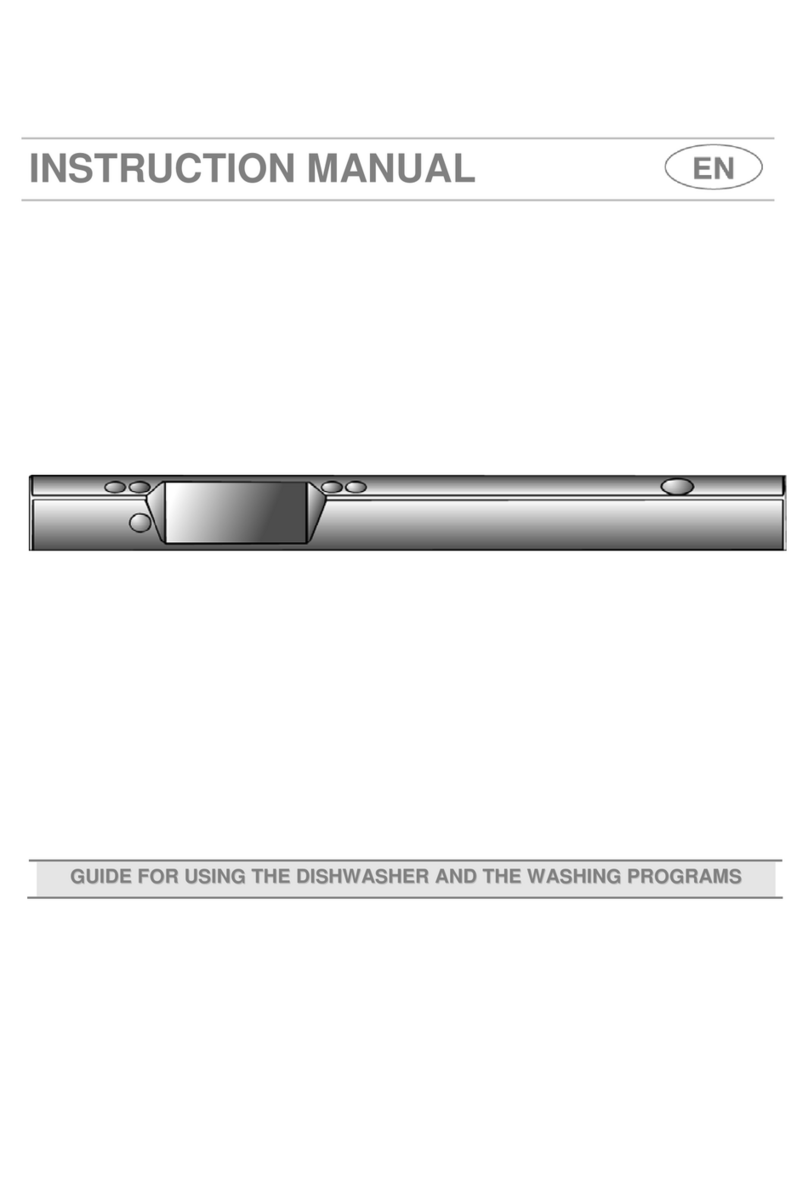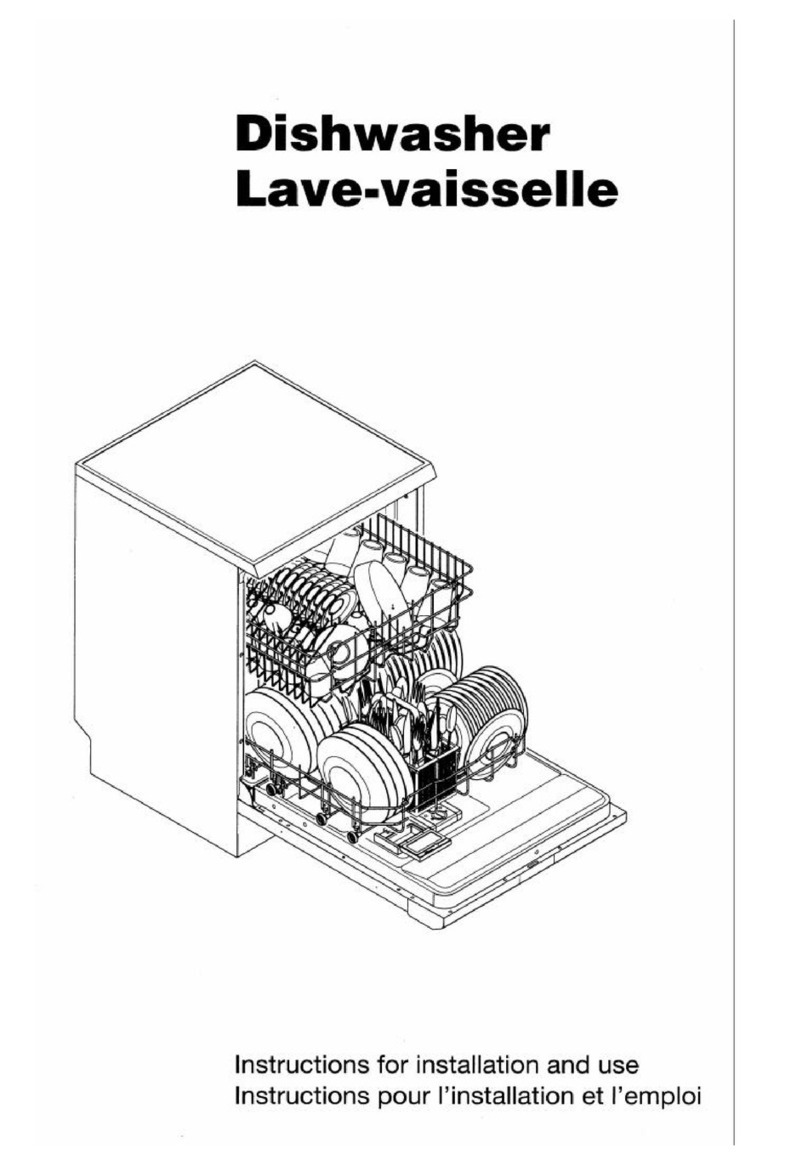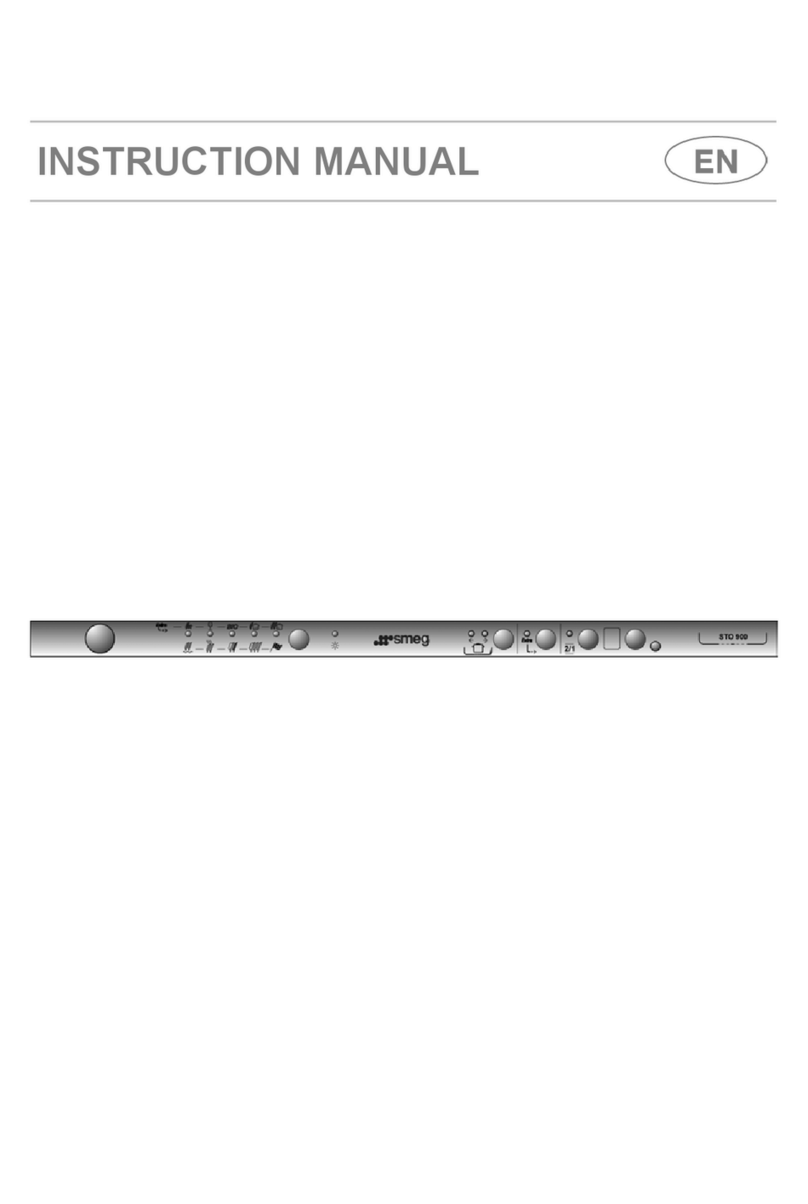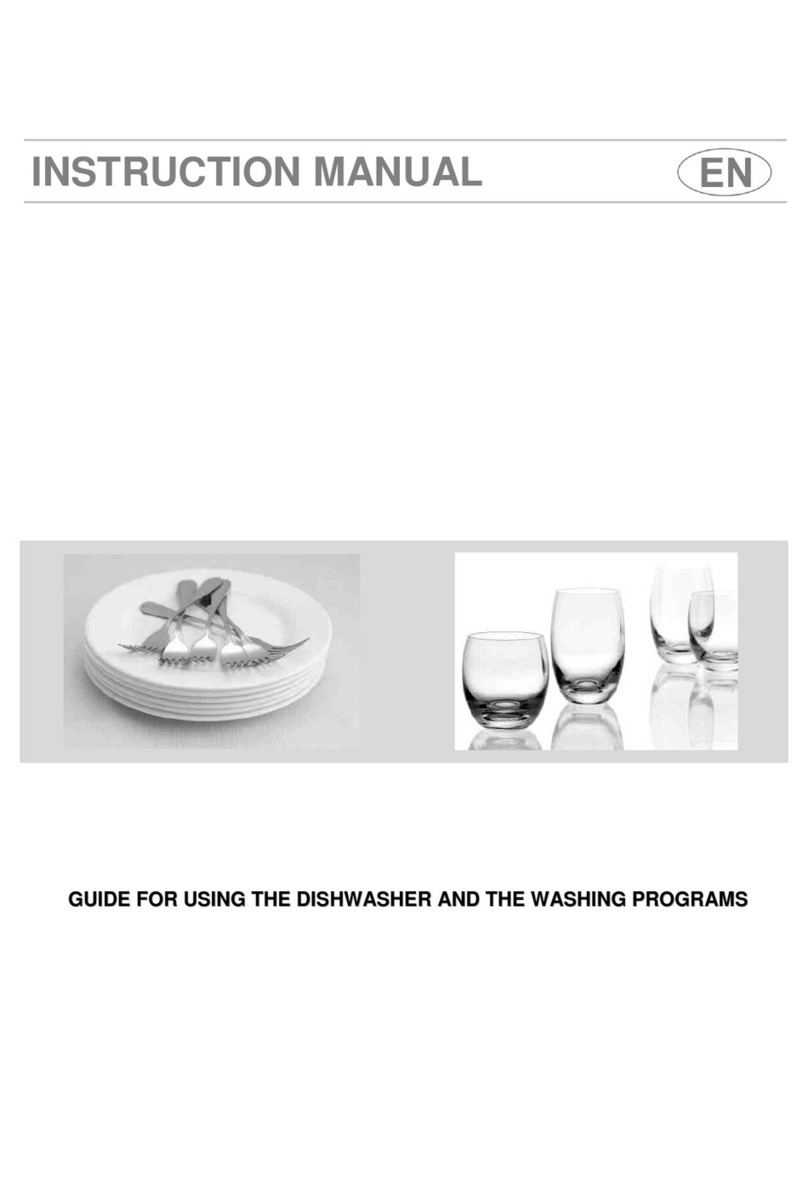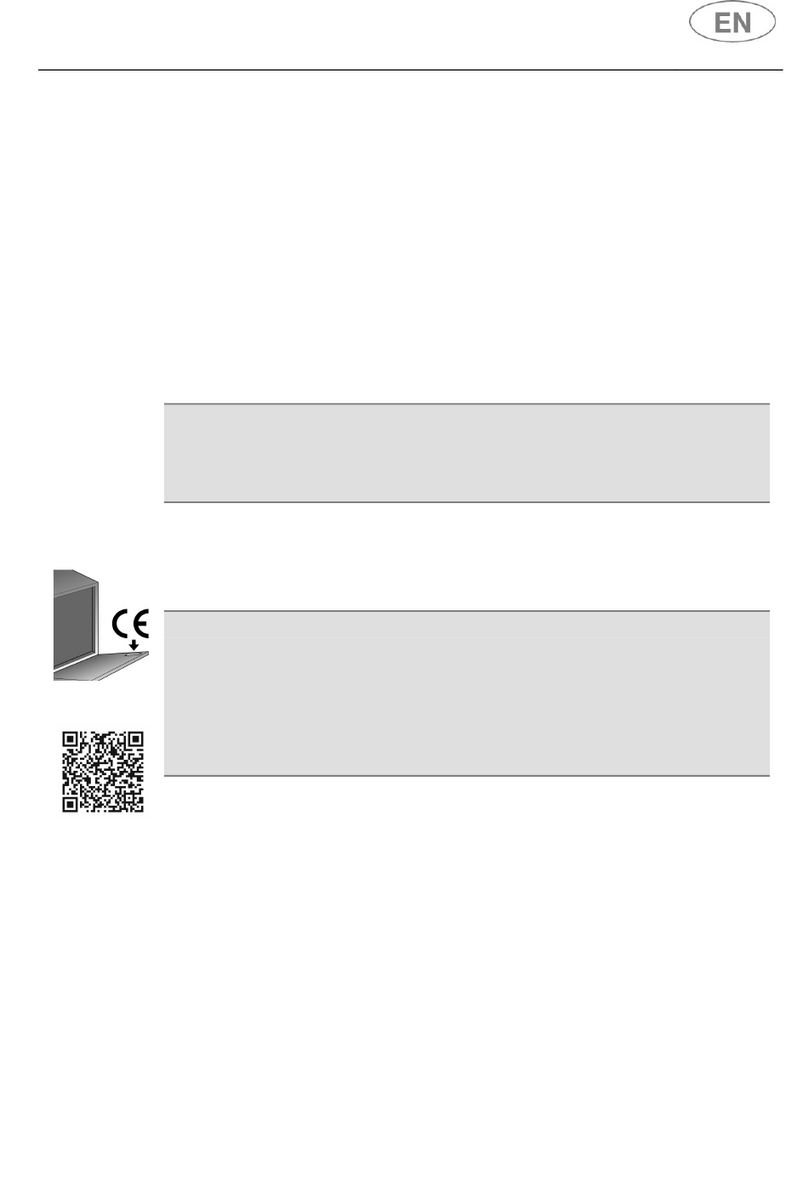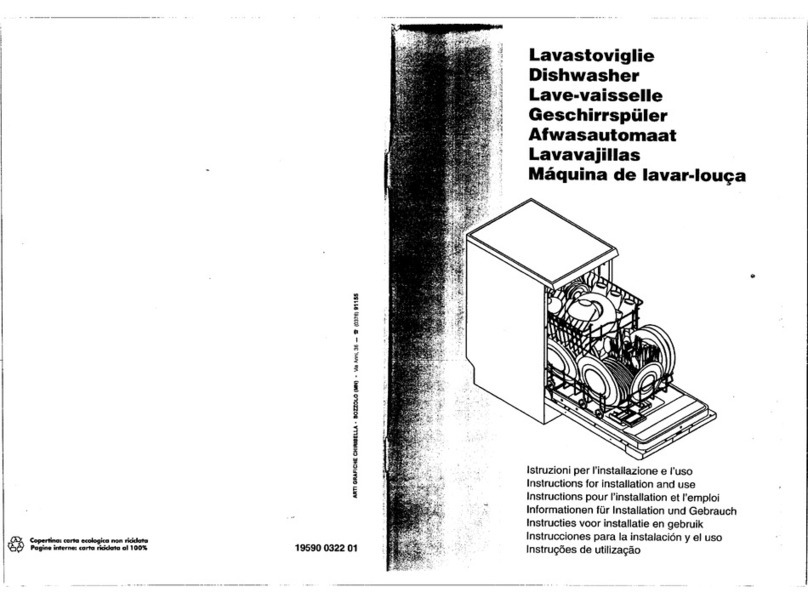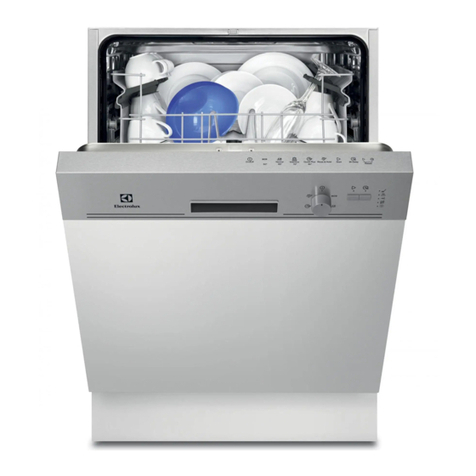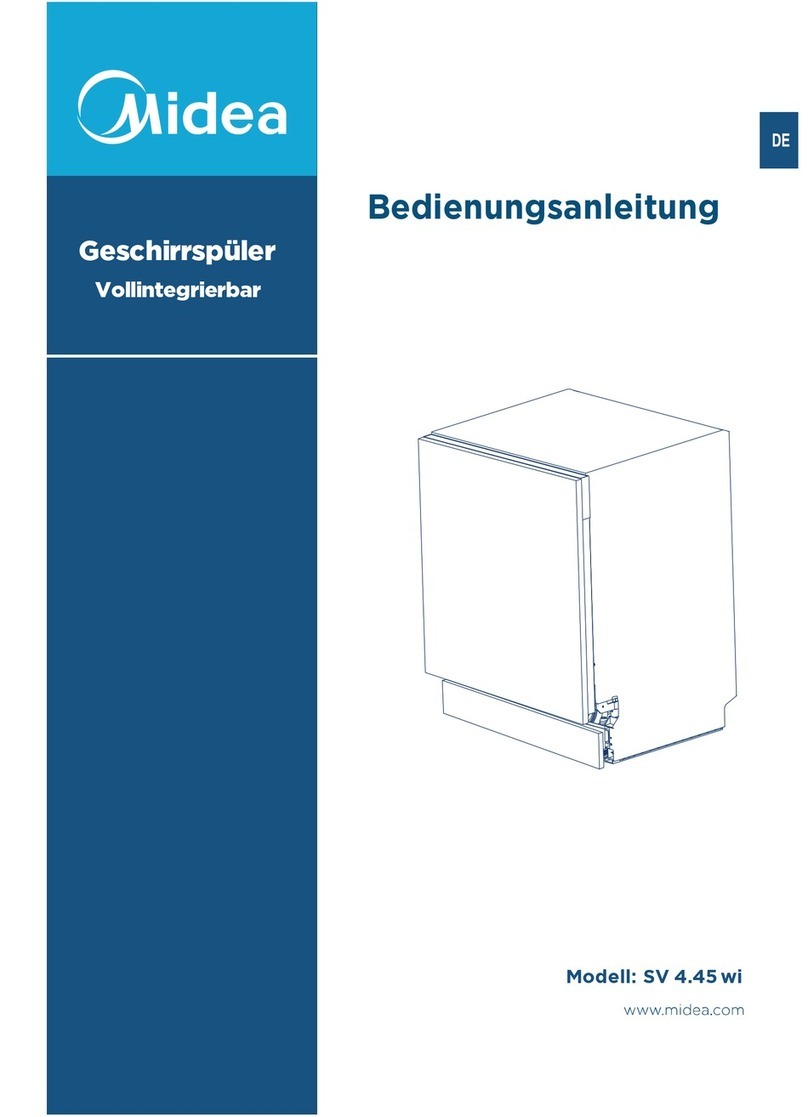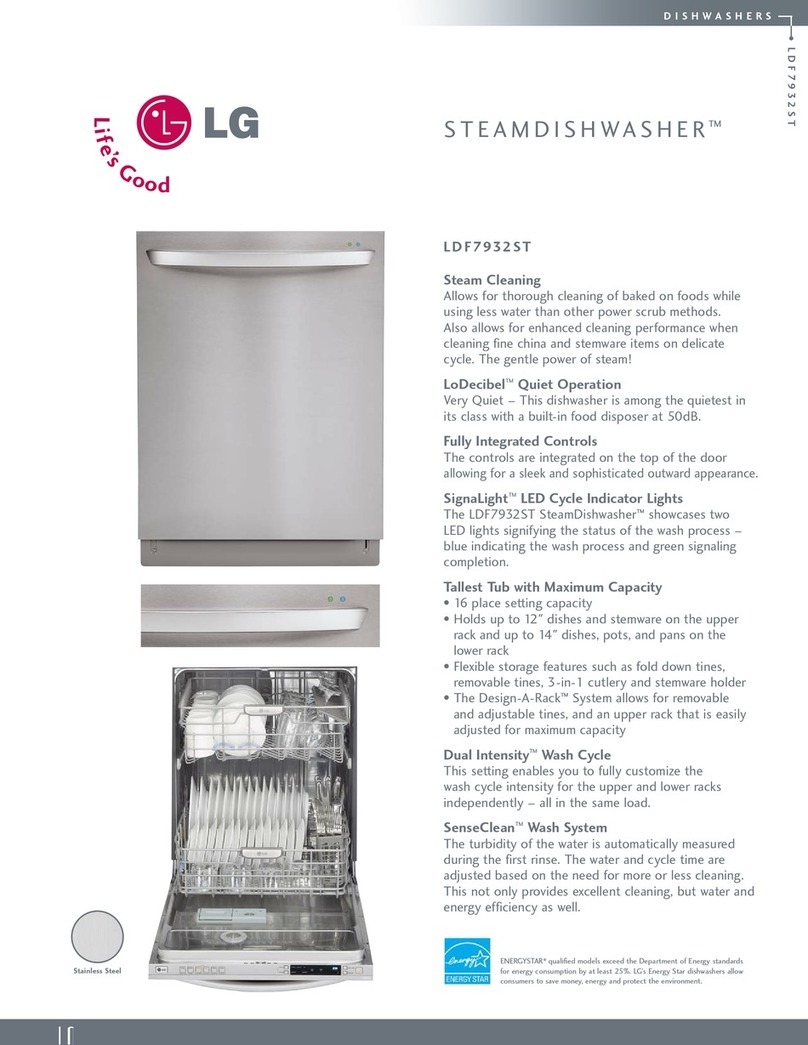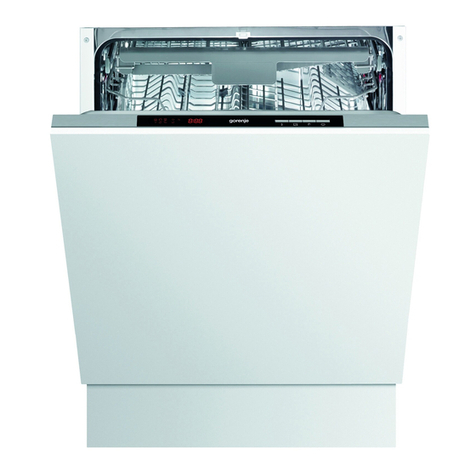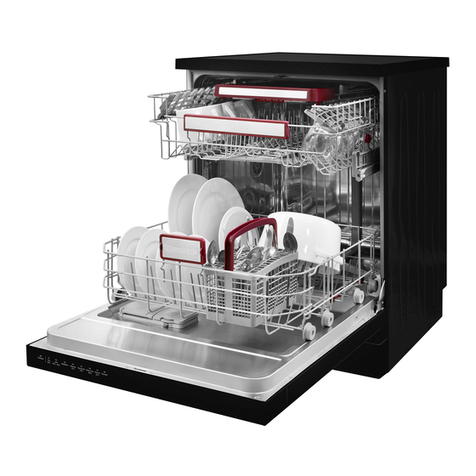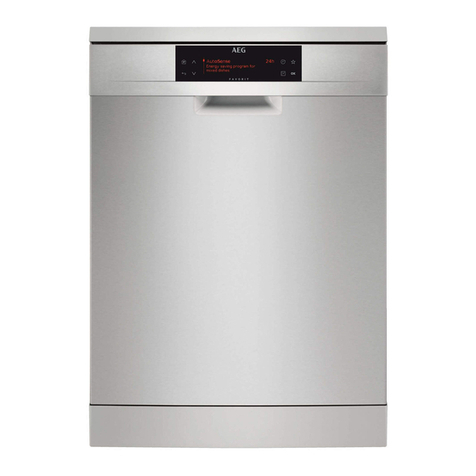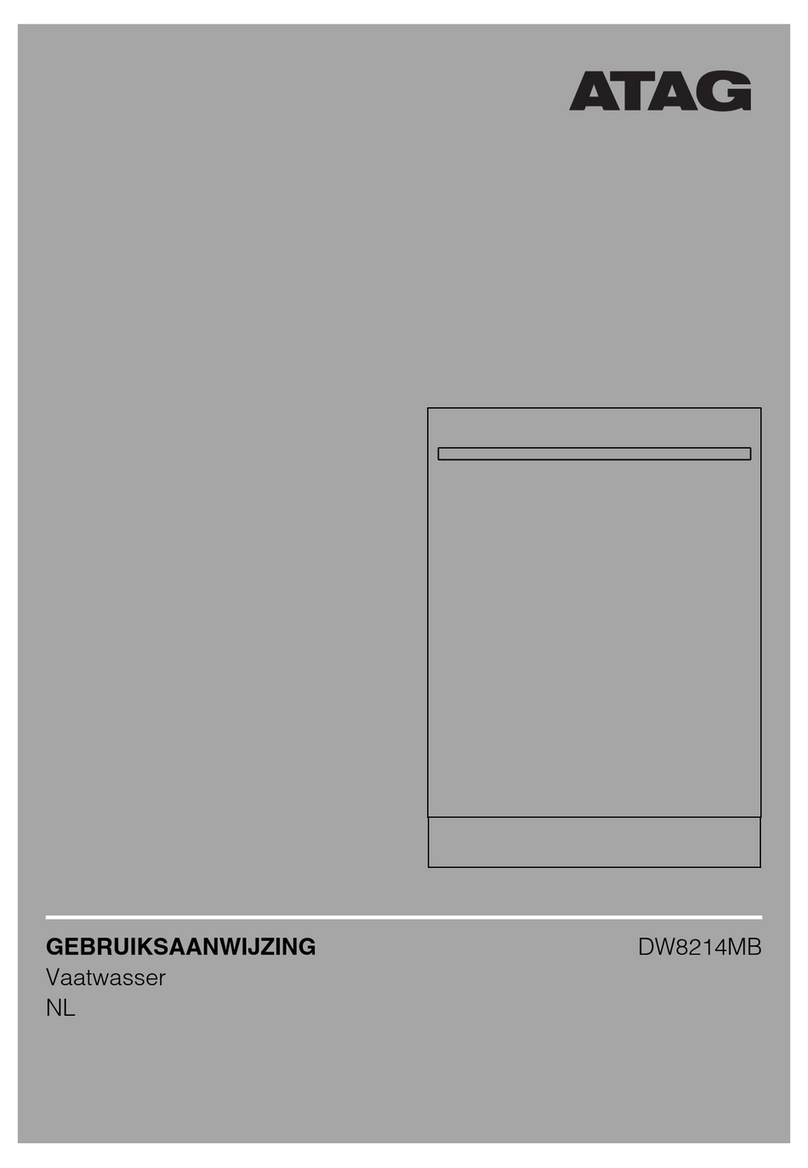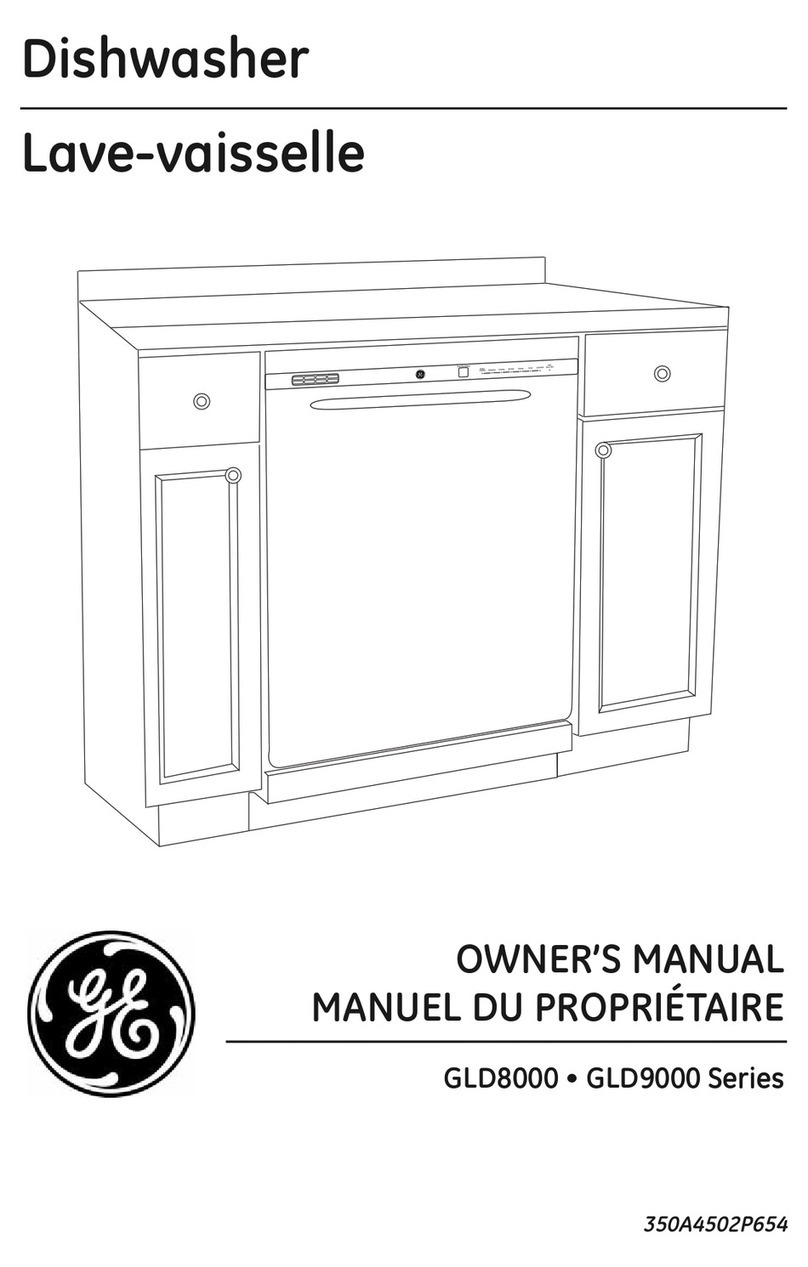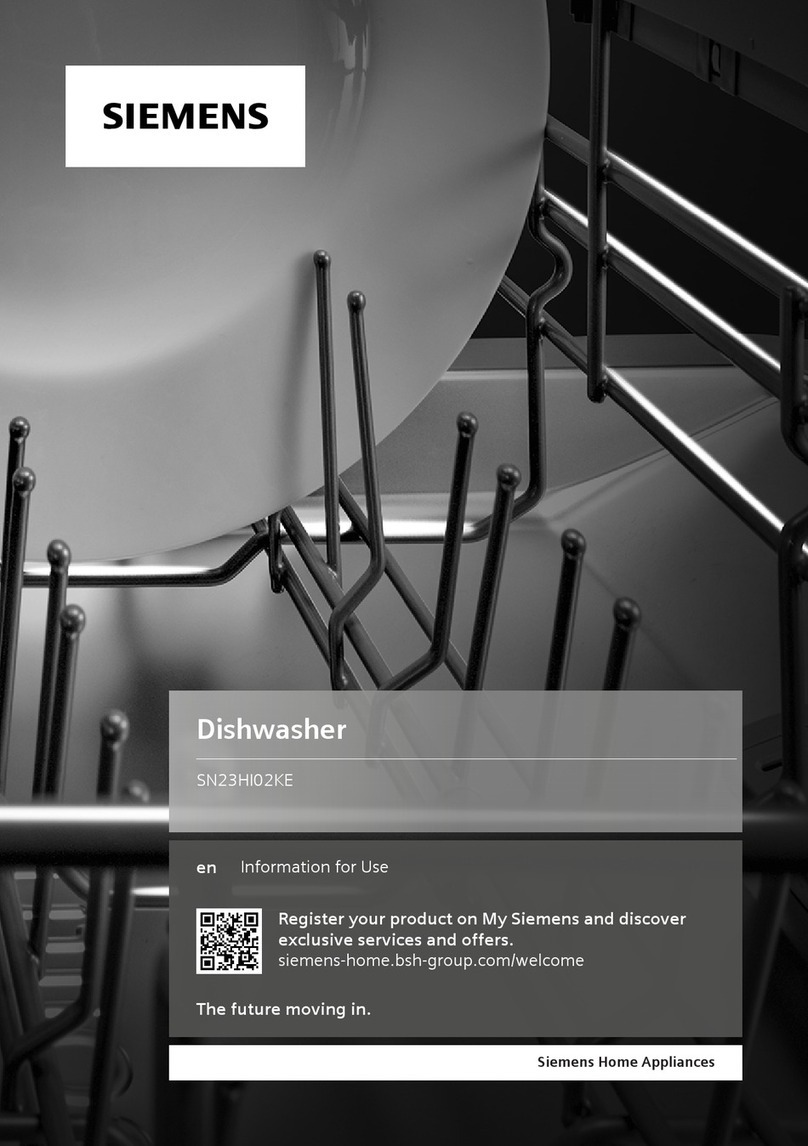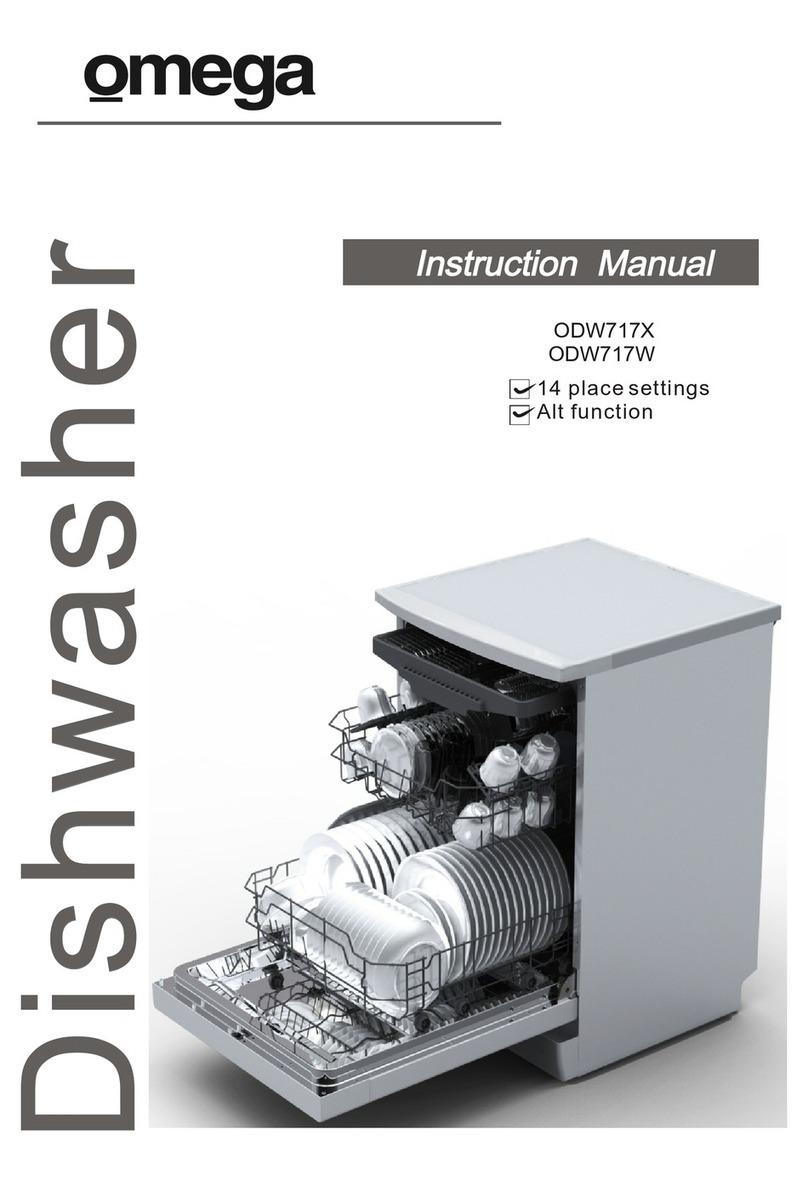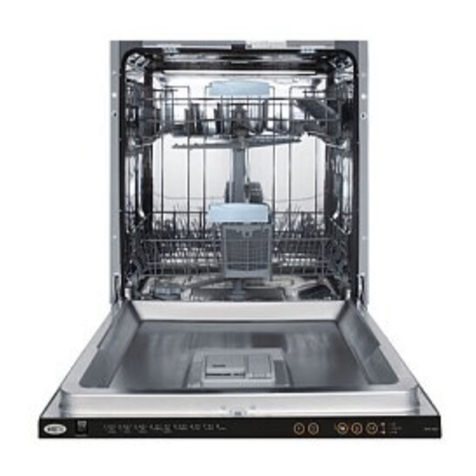
EN - LONG DOOR PANEL ASSEMBLY INSTRUCTIONS
1) Place the cardboard template on the inside of the panel and align it correctly (fig. 1, 2, 3)
2) Installation:
fig. 1a – standard: align the top edge of the template with the top edge of the panel (with the top edge
of the door panel aligned with the top edge of the dishwasher control panel)
1b – customised: position the template at distance “B” (as shown in the diagram on the first page)
3) Check that the cardboard template is correctly positioned, then mark all the points where holes have to
be drilled in the panel (fig. 4, 5, 6)
4) Make starter holes in the panel with a Ø 2.5 mm bit, then make the holes for the bushes with a Ø 6 mm
bit, drilling to a depth of 10-12 mm MAX. (fig. 7)
5) Make starter holes in the bottom of the panel with a Ø 1 mm bit, drilling to a depth of 10-12 mm MAX;
at least two starter holes are recommended (fig. 8)
6) Fit the bushes (A) onto the panel, screwing them down until they are level with the surface of the panel
itself (fig. 9, 10)
7) Fit the plastic inserts (I) into the bottom of the panel and secure them with the 8 flathead screws
provided (H) (fig. 11)
8) Fit the plastic inserts (B) using the screws (E) and the toothed washers (D), without tightening
completely. Adjustment will be required before the screws are tightened completely (fig. 14)
9) Place the metal template across the plastic inserts (fig. 13), aligning it so that it is centred on the panel,
and push the bases of the plastic inserts into the slots in the template until they make contact (fig. 15,
16), then tighten the screws. Repeat the operation for the 2 bottom inserts (fig. 18).
WARNING!: fit the plastic spacers C(fig. 17) underneath the bottom inserts.
10) Connect the panel to the door of the dishwasher by inserting the plastic inserts into the slots provided
on the front of the door (fig. 19, 20, 21).
WARNING: when done, check by hand that the door panel slides up and down.
11) Fit the plastic supports (G) provided onto the inserts (I) already fitted to the door panel (fig. 22)
12) Connect the arms of the hinges to the plastic supports using the screws (L) (fig. 23, 24, 25)
13) Fix the screws using the nuts (M) (fig. 26)
14) Keeping the support pressed down drill 3 starter holes with a Ø 2.5 mm bit (fig. 27)
15) Finish fixing the door panel by tightening the screws (F) on the plastic insert, taking care to fit them into
the starter holes just drilled (fig. 28)
16) ADJUSTING THE DOOR SPRING TENSION
The tension of the springs which open the door is adjusted by turning the screw accessible from the
front of the dishwasher side panel, with the aid of a number 4 Allen key (fig. 29, 30)
17) MODELS WITH AUTOMATIC OPENING
Models with automatic opening have a string (accessible from the front even when the door panel is
fitted) which allows the door to be opened when the appliance is not receiving electrical power, by just
pulling it down (fig. 31, 32)
